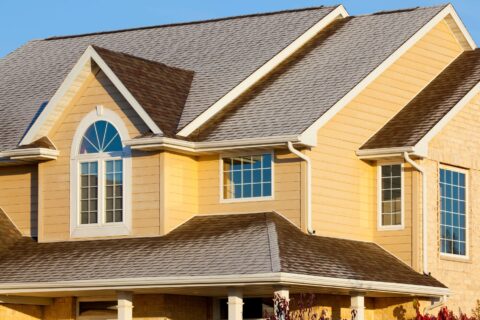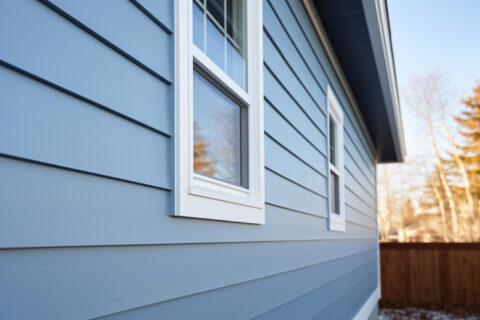Choosing the Best Siding Materials for Canadian Homes
Choosing the right siding for your home is a significant decision that affects both its appearance and protection. With the diverse Canadian climate, homeowners need durable and efficient materials that can withstand harsh winters and warm summers. The right siding not only enhances your home’s curb appeal but also improves its insulation and reduces maintenance costs.
When selecting siding materials, it’s crucial to consider factors such as durability, maintenance, insulation, and cost. Different materials offer various benefits and drawbacks, making each type suitable for specific needs and preferences. From classic wood siding to modern fibre cement, each option comes with its unique set of characteristics that appeal to different homeowners.
In this article, we will explore the most popular siding materials for Canadian homes, compare their pros and cons, and discuss the importance of professional installation. Our goal is to provide you with the information you need to make an informed decision that enhances your home’s beauty and functionality. By understanding the key features of each siding material, you can choose the best option for your home’s exterior.
Factors to Consider When Choosing Siding Materials
When selecting siding for your home, there are several essential factors to consider to ensure you make the best choice. Durability is a primary concern, especially in regions with extreme weather conditions. You need a material that can withstand severe winters, intense sun, and heavy rain without deteriorating. Evaluating the longevity and resistance to environmental damage is crucial for making a sound investment.
Another key factor is maintenance. Some siding materials require regular upkeep to maintain their appearance and functionality, while others are virtually maintenance-free. For busy homeowners, choosing a low-maintenance option can save time and money in the long run. Additionally, consider the insulation properties of the siding. Siding that offers good thermal insulation can reduce your energy bills by keeping your home warm in the winter and cool in the summer.
Popular Siding Materials for Canadian Homes
Vinyl Siding
Vinyl siding is one of the most popular choices for Canadian homes due to its affordability, versatility, and low maintenance. It is available in various colours and styles, allowing homeowners to achieve the desired aesthetic without breaking the bank. Vinyl is also resistant to moisture, so it won’t rot or warp over time. However, it can be prone to cracking in extremely cold conditions, which is something to consider if you live in an area with harsh winters.
Wood Siding
Wood siding offers a classic, timeless look that can enhance the natural beauty of your home. It is available in various types, such as cedar, pine, and redwood, each offering unique textures and finishes. While wood siding is aesthetically pleasing, it requires regular maintenance, including staining or painting, to protect it from the elements. Wood can also be susceptible to pests and rot, so proper care is essential to ensure its longevity.
Fibre Cement Siding
Fibre cement siding combines the durability of cement with the aesthetic appeal of wood. This material is highly resistant to weather damage, UV rays, and pests, making it an excellent choice for Canadian homes. It also offers good fire resistance and requires less maintenance than natural wood. However, fibre cement siding can be more expensive to install and may require professional help due to its weight and complexity.
Metal Siding
Metal siding, often made from steel or aluminum, is known for its strength and durability. It is resistant to fire, insects, and rot, and it can withstand extreme weather conditions. Metal siding is also low-maintenance, requiring only occasional cleaning to maintain its appearance. While metal siding can be more expensive upfront, its long lifespan and minimal upkeep can make it a cost-effective option in the long run.
Brick and Stone Veneer
Brick and stone veneer siding provide a rich, natural look that adds significant curb appeal and value to your home. These materials are incredibly durable and require little maintenance. They are also excellent insulators, helping to regulate your home’s temperature. However, they can be more costly to install due to the weight and specialized labour required. Despite the higher initial cost, brick and stone veneer can offer a timeless and durable solution for any home.
Comparing Siding Materials: Pros and Cons
Durability and Maintenance
When it comes to durability, different siding materials offer varied levels of resilience and maintenance needs. Vinyl siding is relatively low-maintenance and resistant to moisture and pests but can crack under extreme cold. Wood siding provides a warm and classic look but requires regular staining or painting to protect against weather damage and pests. Fibre cement siding is robust and resistant to most environmental factors, offering great durability with minimal maintenance.
Metal siding is one of the most durable options, capable of withstanding harsh weather and requiring very little upkeep. However, metal can dent and may need occasional repainting. Brick and stone veneer are exceptionally durable and require minimal maintenance, making them ideal for long-term use. Despite requiring less frequent attention, regular inspections for damage or mortar wear are still recommended for all siding types to maintain their integrity.
Insulation and Energy Efficiency
Energy efficiency is another essential factor to consider. Vinyl siding can be insulated to improve thermal performance, keeping homes warmer in winter and cooler in summer. Wood siding naturally offers some insulating properties and can be paired with additional insulation to enhance energy efficiency further. Fibre cement siding also provides good insulation and contributes to improved thermal regulation.
Metal siding, while durable, offers less natural insulation but can be combined with underlying insulation materials to increase energy efficiency. Brick and stone veneer are excellent insulators, helping to maintain stable indoor temperatures regardless of the weather outside. Choosing a siding material with good insulating properties can lead to savings on energy bills and a more comfortable living environment.
Cost and Lifespan
The cost and lifespan of siding materials vary widely. Vinyl siding is budget-friendly and can last around 20-30 years with proper maintenance. Wood siding, while more expensive, offers a charming aesthetic and can last 20-40 years, depending on the species and maintenance. Fibre cement siding typically falls in the mid-to-high price range and boasts a long lifespan of 30-50 years.
Metal siding, with its robust nature, also tends to be on the pricier side but can last 40-70 years. Brick and stone veneer are among the most expensive options but offer unparalleled durability, often lasting 50-100 years or more. While initial costs may be higher for some materials, their long lifespan and low maintenance needs can make them a cost-effective choice in the long run.
Professional Installation for Optimal Results
Importance of Hiring Experienced Contractors
Hiring experienced contractors is vital to achieving the best results with your siding installation. Professional contractors have the expertise and tools to ensure the siding is installed correctly, which affects both the appearance and performance of the material. Poor installation can lead to gaps, warping, and reduced effectiveness in insulation, which can cause higher energy bills and potential damage to your home’s structure.
Experienced contractors also offer valuable advice on the best materials and methods for your specific home and climate. Their skills ensure that the siding not only enhances your home’s aesthetic appeal but also provides optimal protection against the elements. A well-installed siding system will have fewer issues over time, saving you money on repairs and maintenance.
Conclusion
Choosing the right siding material for your home involves careful consideration of durability, maintenance, insulation, and cost. Each material, from vinyl and wood to fibre cement, metal, and brick veneer, offers distinct advantages and potential drawbacks based on your specific needs and preferences. The right siding can significantly enhance your home’s appearance while providing essential protection against harsh Canadian weather.
For optimal results, hiring experienced contractors ensures that your siding is installed correctly and will perform well over time. Professional installation, combined with regular maintenance, can extend the life of your siding and maximize your investment.
If you’re ready to upgrade your home’s siding, contact Magnum Exteriors today. Our team is here to help you select the best material and siding supplies to ensure a flawless installation. Improve your home’s durability and curb appeal by scheduling a consultation with Magnum Exteriors now.


